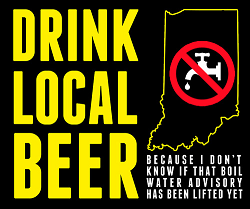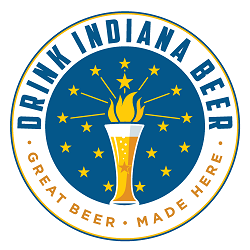Friday, January 06, 2006
Eateries, their choices in food, wine and beer, and lowest common denominators.
This topic stems from a conversation I had with Jim Huie at Maido on Christmas Eve, and was posted yesterday in slightly modified form at the Louisville Restaurant Forum, where a lively exchange ensued.
Jim remarked that when he and his wife were starting out, the local Anheuser-Busch representative was appalled when informed that there were no plans for Maido to sell Budweiser, spluttering somewhat ominously that they’d never stay in business with an attitude like that.
They still are … in business, and thankfully, remain imbued with such an attitude.
Indeed, for as long as I can remember, it has been accepted – and verging on the axiomatic – that a restaurant (not a bar, mind you) licensed to sell beer must offer at least the major mass-market brands: Bud, Bud Light, Miller Lite, Coors Light, perhaps MGD. Without these, or so the theory holds, disgruntled customers will refuse to patronize the establishment.
Being a contrarian by nature, I’ve conducted a decade-long search, and in spite of the menacing helpfulness of wholesaler reps like the one who spoke to Jim, there seems to be no “law” of any sort on the books that mandates this generally unquestioned “requirement” of being in the beer business.
Approaching this on a purely theoretical basis, is this notion really true?
(Full disclosure: Since the NABC brewery came on line in 2002, we have not served these brands at Sportstime Pizza or Rich O’s, our two pizzeria/pub faces to the public. Before that, we’d steadily reduced the number of such offerings in bottles at Sportstime, where the television sets are located, having completely ceased serving them at Rich O’s way back in 1994.)
Over the years, when asking this question of experienced, blood-and-guts restaurateurs and being told in response that there’s no conceivable way to avoid offering Bud and Bud Light, if for no other reason than as a service to clients like those I once observed at a top-notch Louisville steak house, carving away at a $30 prime rib entrée while chasing it with Lite consumed directly from the bottle, I’ve parried by asking whether the same logic would be applied to choosing the wine list.
Would Riunite or MD 20/20 be part of the wine list based on national sales figures alone, or is it possible to be more selective in offering better a wine and educating the consumer as to the differences?
Of course, the answer usually is, “well, that’s different.”
But is it really different?
If so, then why is it different?
Why shouldn’t the same considerations that lie behind the composition of the food menu and the wine list be applied to the beer list?
Note that I’m not suggesting that any restaurateur forego mild, golden lager beer – just that he or she considers beer in the same manner as other aspects of the operation when making the choices.
We consistently sell three or four kegs of Spaten’s perfectly serviceable Munich-brewed Helles (golden German-style lager) each and every week of the year, in addition to bottles of Samuel Adams, Heineken and the like (including Corona at $4.25 a bottle, just to see if people will pay such an outrageous price for bad beer).
Imagine the advent of a café with impeccably high standards of cuisine, upscale casual, excellent short wine list – in essence, nothing but the finest offerings and a target demographic to match.
Would such an establishment stock boxes of fridge wine according to the same resigned and unexamined logic used to justify stocking Budweiser?
If it were a vegetarian place, would it put an all-beef burger on the menu because so many people like that sort of thing and might not dine if it were not available?
Why must we accept the lowest common denominator in beer when we refuse to do so in wine and food?
Or must we?
Subscribe to:
Post Comments (Atom)






No comments:
Post a Comment